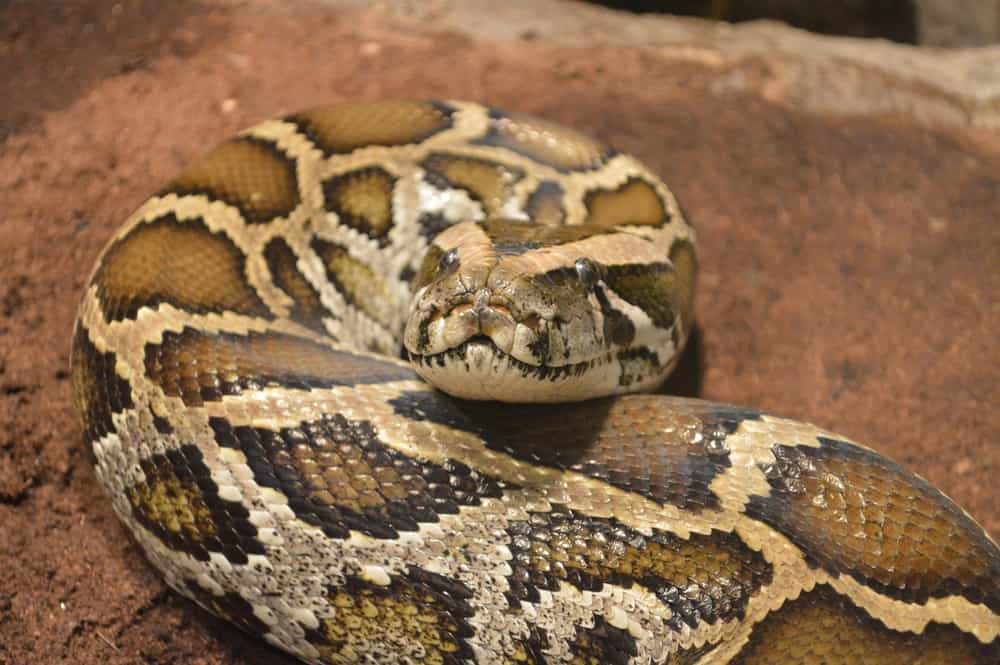


Nevertheless, females can mate with more than one male per season. The researchers hypothesized that females may only decide to mate when in top physical condition.


The same study found evidence suggesting that females do not mate every year, while males do. Boa constrictors typically mate during the dry season, which in their range tends to be from April until September, according to a study published in the Journal of Herpetology. “Boas tend to be solitary, until mating time,” said Heyborne. Once the prey is dead, the boa constrictor swallows it whole. “Blood cannot get to the brain, and the animal dies within seconds due to ischemia.” “It turns out that the squeezing overwhelms the circulatory system,” explained Heyborne. Scientists held this belief until quite recently, when a paper revealed what happens to prey animals during constriction. Another is that they suffocate it, squeezing the prey’s lungs too tightly to work. One is that boa constrictors crush or break the bones of their prey. There are, however, some common misconceptions about how that constricting works, said Heyborne. Boas are not venomous rather, they kill their prey by constriction, or squeezing, it to death. Probably the best-known characteristic of boa constrictors is their method of killing. According to the ADW, it takes boa constrictors up to six days to digest a meal. Though most of their prey is not astoundingly large, boa constrictors will eat anything they can get their enormous, stretchable jaws around. According to the Smithsonian National Zoological Park, bats are a favorite food, which boa constrictors catch while hanging from trees or the mouths of caves, snatching their prey as it flies by. He noted that active foraging behaviors have been noted in places with less dense prey populations.īoa constrictors’ diets are composed mostly of small mammals like rats and squirrels. Hunting and dietīoa constrictors tend to be ambush predators that sit and wait for desired prey to pass from their tree perch or burrow, said Heyborne. Along with their tongues, which gather sensory information as they do for most snakes, boa constrictors’ eyes are the primary tools through which they perceive the world, especially since boa constrictors do not have heat-sensory pits like most other members of the Boidae family do. When not clouded, boa constrictors have excellent vision. This affects their vision and as a result, they often stay still for a few days until their vision returns to normal, Heyborne said.
#BOA CONSTRICTOR SNAKE SKIN#
When they’re shedding, boa constrictors “tend to become more easily stressed and thus more aggressive,” though that tends to vary from snake to snake and across populations.Īlso when shedding, boa constrictors’ eyes cloud over as a lubricating substance develops under the old skin layer to shield the eye. “Like all snakes, they must shed their skin in order to grow,” said Heyborne. Sometimes they hide in the burrows of medium-sized mammals. Because of their large size, they tend to move in a straight line instead of slithering back and forth like smaller snakes, according to the San Diego Zoo. Though they are good swimmers, they prefer to be on dry land or in trees. These snakes, especially young ones, are semi-arboreal, said Heyborne. They are mostly nocturnal, though they will sometimes come out during the day to sun themselves in cooler temperatures. Behaviorīoa constrictors are typically solitary, said Heyborne. They are often found near streams or rivers, according to the ADW. They can also be found in dry tropical deserts and semi-deserts, woodlands, scrub and agricultural areas. When they do reside in rainforests, they tend to stick to the edges or clearings. Though stories often depict boa constrictors living in jungles, their habitats are actually much more diverse. Previously, scientists thought that all members of the family Boidae were New World snakes, but certain boa species have been discovered in remote areas such as Mauritius and New Guinea, according to the San Diego Zoo. They are also found on islands in the Caribbean and off the Pacific coast. They are found throughout the Americas, ranging from northern Mexico through Central America and into Peru on the west side of the Andes and south to Argentina on the east side. Boa constrictors are New World snakes, meaning they live exclusively in the Western hemisphere, according to the ADW.


 0 kommentar(er)
0 kommentar(er)
